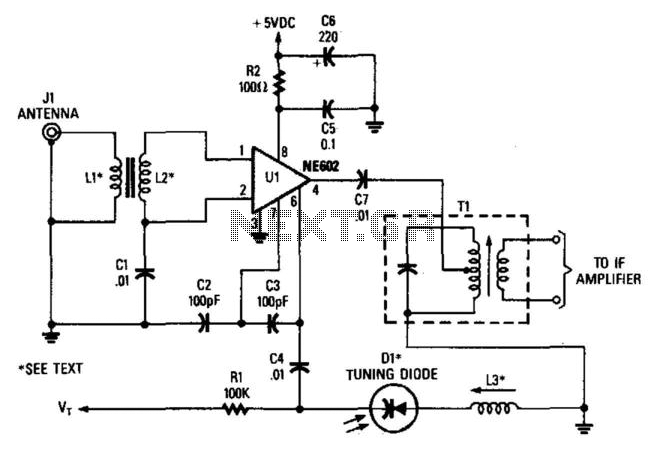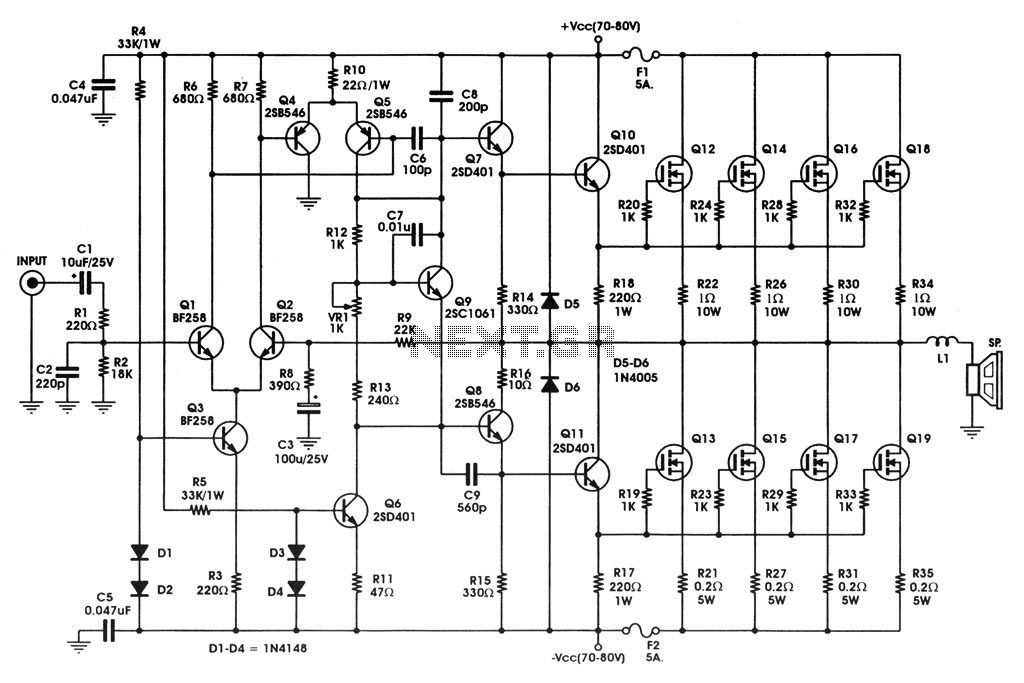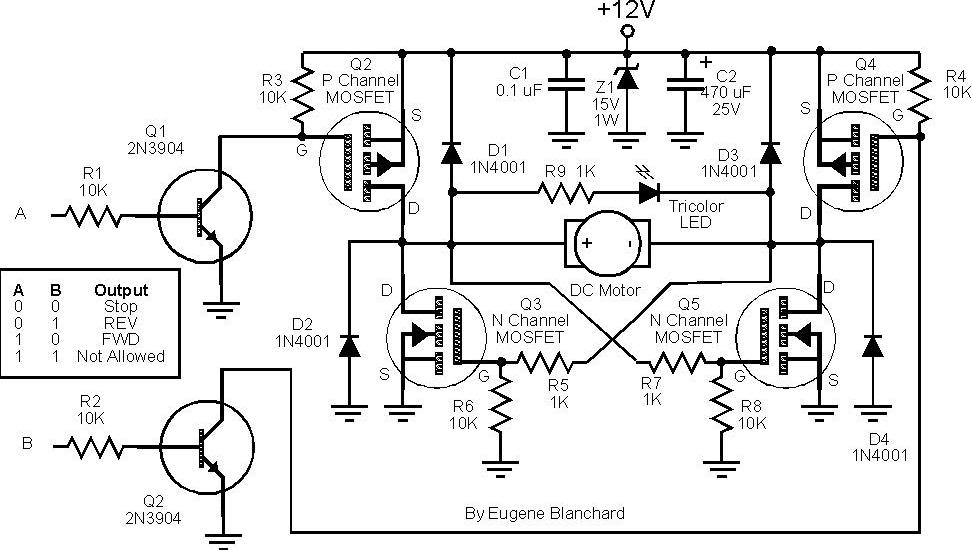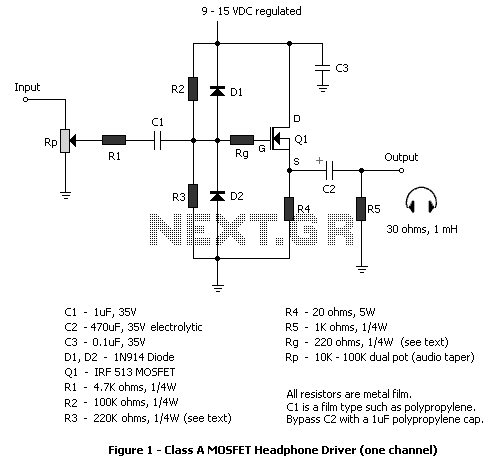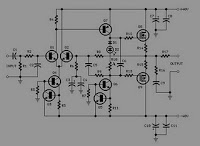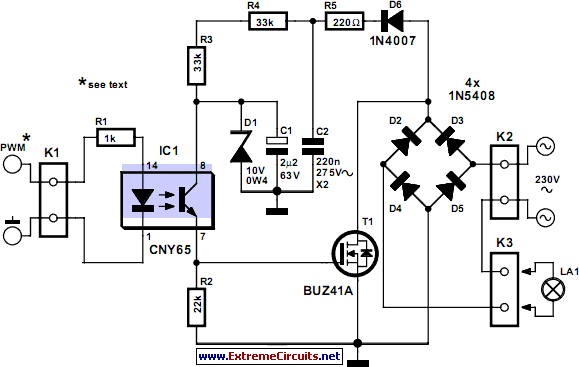
Dual-Gate Mosfet Rf-Amp Stage
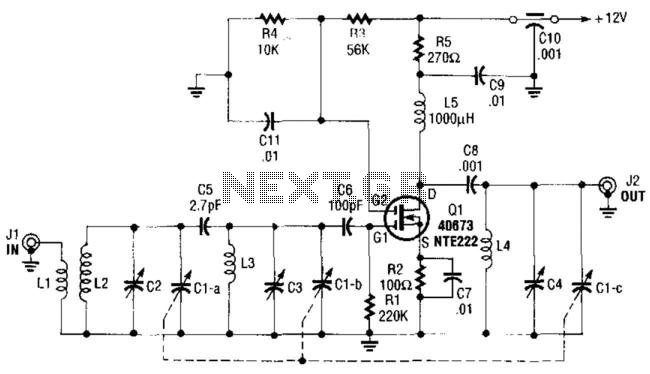
The use of a double-tuned input and a single-tuned output yields superior RF selectivity compared to equivalent single-tuned designs. Automatic Gain Control (AGC), if required, can be added to gate 2 of Q1 and should drive gate 2 negative for decreased gain.
The circuit employs a double-tuned input stage, which enhances the selectivity of radio frequency (RF) signals by allowing the circuit to better discriminate between closely spaced frequencies. This configuration typically consists of two inductors and two capacitors, tuned to resonate at the desired frequency while providing a narrow bandwidth. The single-tuned output stage, in contrast, utilizes a single resonant circuit to extract the amplified signal, resulting in a simpler design but potentially reduced selectivity.
Incorporating Automatic Gain Control (AGC) into the circuit can improve performance by automatically adjusting the gain of the amplifier based on the strength of the incoming signal. In this design, the AGC is connected to gate 2 of transistor Q1, which is part of the amplification stage. The AGC circuit modulates the voltage applied to gate 2, driving it negative when higher gain is not needed. This negative bias effectively reduces the amplification, preventing distortion and ensuring that the output signal remains within optimal levels, even when faced with strong incoming signals.
The overall design benefits from the combination of double-tuned input and AGC, providing a robust solution for RF applications requiring high selectivity and stable gain control. This configuration is particularly useful in communication systems where signal integrity is paramount, allowing for improved reception and clarity in the presence of competing signals. The use of a double-tuned input and a single-tuned output yield superior RF selectivity to that of equivalent single-tuned designs. AGC, if required, can be added to gate 2 of Ql, and should drive gate 2 negative for decreased gain. 🔗 External reference
The circuit employs a double-tuned input stage, which enhances the selectivity of radio frequency (RF) signals by allowing the circuit to better discriminate between closely spaced frequencies. This configuration typically consists of two inductors and two capacitors, tuned to resonate at the desired frequency while providing a narrow bandwidth. The single-tuned output stage, in contrast, utilizes a single resonant circuit to extract the amplified signal, resulting in a simpler design but potentially reduced selectivity.
Incorporating Automatic Gain Control (AGC) into the circuit can improve performance by automatically adjusting the gain of the amplifier based on the strength of the incoming signal. In this design, the AGC is connected to gate 2 of transistor Q1, which is part of the amplification stage. The AGC circuit modulates the voltage applied to gate 2, driving it negative when higher gain is not needed. This negative bias effectively reduces the amplification, preventing distortion and ensuring that the output signal remains within optimal levels, even when faced with strong incoming signals.
The overall design benefits from the combination of double-tuned input and AGC, providing a robust solution for RF applications requiring high selectivity and stable gain control. This configuration is particularly useful in communication systems where signal integrity is paramount, allowing for improved reception and clarity in the presence of competing signals. The use of a double-tuned input and a single-tuned output yield superior RF selectivity to that of equivalent single-tuned designs. AGC, if required, can be added to gate 2 of Ql, and should drive gate 2 negative for decreased gain. 🔗 External reference
